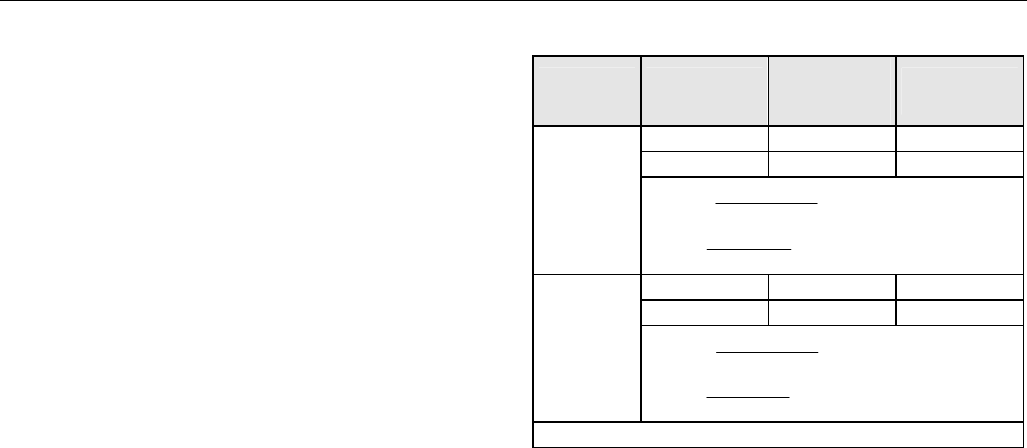
R7426A,B,C TEMPERATURE CONTROLLER WITH AND WITHOUT REAL TIME CLOCK
EN1B-0203GE51 R0507C 10
Setting Guidelines for Reset Time of P+I Control
The reset time tr should be adjusted to 2...3 times of the
response time T
u
, which is the time interval between the
beginning of a sustained disturbance (e.g. rapid step change
of valve position) and the instant when the resulting change in
the output signal reaches a specified fraction of its final
steady-state value, either before overshoot or in the absence
of overshoot.
The response time T
u
in discharge air control is normally in
the range of 0.1 to 0.6 min, which allows adjustments of the
reset time tr in a range of 0.2 to 2 min.
In room control the response time T
u
is in the range of
0.5 to 5 min, which results in a setting of 1 to 15 min.
Start Point Y
start
(P.15)
This control parameter is available only on the single output
controller R7426A and on the R7426B controller if the three 3-
position floating outputs are configured for 6-stage ON/OFF
sequence control and on the R7426B,C controllers if YMode
= 1 is selected.
The start point determines the midrange shift of the output Y1
from the calculated control point.
The start point is calibrated in degrees K and is the offset
(plus or minus) from the set values or calculated control
points at which the output Y1 is at 50%. Normally and
especially in P+l control, the start point should be set at zero.
A change is required only in specific applications where a
asymmetrical arrangement results in improved control per-
formance, e.g. if for heat-up of a large space in the morning a
high heat capacity is needed and for normal control the valve
must be opened by only a small amount.
Compensation Changeover Point W
comp
(P.03)
The control parameter W
comp
defines the start point of
summer or winter compensation. Above the compensation
changeover point (W
comp
) summer compensation and below
W
comp
winter compensation is performed.
Summer / Winter Compensation Authority
Su / Wi (P.04 / P.05)
These authority settings determine the reset effect (OAT
Comp
)
the compensation sensor (T3) has on the main setpoint W1 in
percentages. Outside temperature reset in summer and
winter time are commonly used applications.
To calculate winter and summer authority, the throttling range
must be considered in proportional-only control according to
Table 12.
Table 12. Calculation of summer/winter compensation
control
schedule
room temp.
(T1)
outdoor air
temp.
(T3/T
comp
)
throttling
range (X
P
)
20
°
C 20
°
C 2
°
C
22
°
C -15
°
C 2
°
C
Winter
Aut Wi =
∆
∆
T1 X
t Outside Air
100%
p
+
⋅=
(22 - 20)+ 2
35
100% 12%⋅=≈
20
°
C 20
°
C 2
°
C
26
°
C 35
°
C 2
°
C
Summer
Aut Su =
∆
∆
T1 X
t Outside Air
100%
p
−
⋅=
(26 -20) - 2
15
100% 27%⋅=≈
Compensation change-over at +20
°
C outdoor air temperature
NOTE: With P+I control X
p
= 0
Occupied/Unoccupied Function SOFFS
(P.16)
A potential-free contact can be used between terminals 1 and
4 to switch the controller between occupied (contact closed)
or unoccupied (contact open) mode.
In occupied mode, the temperature set point W1 is used for
the control point calculation. In unoccupied mode, the SOFFS
parameter value is added (cooling) to or subtracted (heating)
from the calculated control point.
In the case of the R7426A controller, the parameter Y1CTRF
must be set to 0 or 1 (≠ Cho) to match the required heating or
cooling application.
If the configuration parameter Y1CTRF is set to 2 (summer /
winter changeover), the parameter SOFFS is not considered.
In sequence applications of heating and cooling, the SOFFS
parameter value is added to the control point for cooling
(CTRPC) and subtracted from the control point for heating
(CTRPH) (see Fig. 5).
Night Mode Offset NOFFS
(P.26: Controller with RTC only)
This control parameter is used to set the night mode offset.
During night mode, freeze protection is active and the
occupied / unoccupied function is inactive.
Night Cycle NightLow and NightHigh
(P.24 and P.25: with RTC, only)
The control parameters NightLow and NightHigh are used
by the night cycle program (controller mode = OFF) to assign
unoccupied night low or high limits for the protection of a
space and its contents against temperature extremes.


















